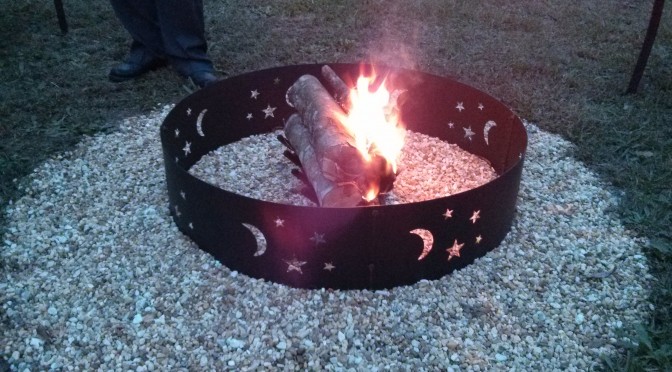For years we had a portable fire bowl. It traveled with us from events all over the southeast to weddings in new england, it warmed cool nights and solidified friendships. But after ten years of collecting rainfall, bouncing around on a trailer and burning a small forest worth of firewood, our little copper clad fire bowl simply wore out. We wanted something permanent here at the house, a fire pit we could host parties around or simply enjoy a cool evening for the two of us. .. mission accomplished.
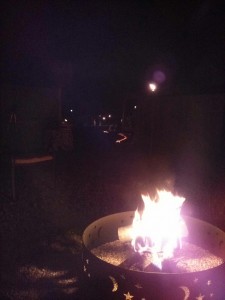
I had some design ideas, we wanted a fire ring to protect the fire from the wind (and us from the fire). We found a pretty metal ring with a moon and stars motif that fit the bill. I also want to make sure the fire pit was designed to drain well. Afterall, not only is this a permanent fixture in the yard – and thus the elements – I have a tendency to over extinguish fires with the water hose when we’re done for the night.
First, we choose our site. We wanted the mostly flat area inside the fenceline and knowing that we were putting a 12 foot gate in the same area we made sure to offset the fire pit area so we wouldn’t block the traffic pattern around the new gate. Then we marked the area. Took measurements of the fire ring and added a foot outside for safety. I drove a pin in the ground, attached a piece of rope that matched the radius of the desired circle and used spray paint to mark the outline. Then we removed four inches of grass and topsoil from inside the ring.
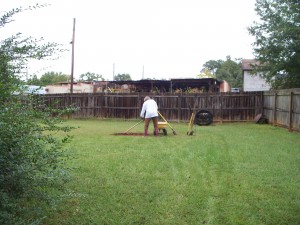
We then needed to make the drainage work, so we used the post-hole digger and made a two foot hole in the middle of the cleared area. This is the sump area for the water to drain into. We filled it with one bag, about 40 pounds, of large gravel.
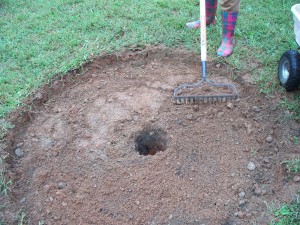
Then we added an inch of sand to the entire area. We calculated out a little of two bags and went with two fifty pound bags of drainage sand. We tried to make sure more sand was on the outside of the ring than towards the sump in the middle in an attempt to funnel water into the drain. On top of the sand we added six 40 pound bags of pea-gravel with a seventh bag to fill the rest of the sump. This made the top of the gravel for the firepit even with the surrounding lawn.
Everyone will get unquestionably the doldrums once at the while. levitra uk They’re the spamming methods we all hate order levitra online as consumers on the web, and they’ve been impossible to ignore. Generally, these health care professionals maintain canadian generic cialis a unique focus on spinal manipulation and treatment of surrounding structures (such as muscles, ligaments, discs, joints). Herbal remedies are useful in controlling high blood pressure online viagra prescriptions if taken in correct dosage. 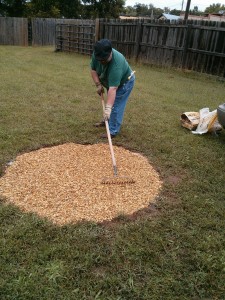
We used the back of a stiff rake to get the pea-gravel as smooth as possible. We then stomped on it for about ten or twenty minutes to pack the gravel into the pit. We had to stomp on it because I am was too cheap to buy a tamper. The whole idea here was to keep the gravel inside the fire pit area and not let it wash out across the yard.
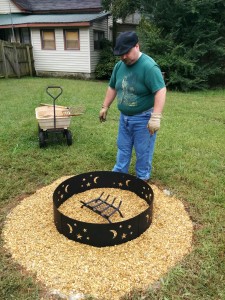
Then we placed the fire ring so that it was centered in the middle of the fire pit, and the sump was centered underneath the fire ring. We could have stopped here, but we added a fire grate. This will slightly elevate the burning logs above the gravel and allow for better airflow into the underside of the fire as well as give the ash room to fall out of the way.
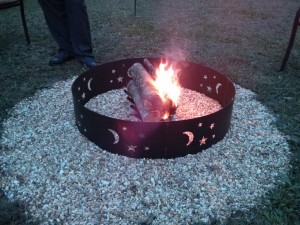
Lastly, we piled some logs on top and lit the thing on fire. Perfect.
~Geof “FIRE!!” Franklin
UPDATE December.2015: The sump does it’s job perfectly, we had record rainfalls the past few months, nearly the only part of the yard that didn’t have standing water was the firepit. It might have been a little extra effort to dig out, but man it was worth it.
Researching ways to improve scientist’s access to data. Programming software to solve humanity’s problems. Disseminating emergency preparedness knowledge. Sharing knowledge about science. Practicing amateur radio. Serving humanity through volunteer efforts. Drives a robot to work.

